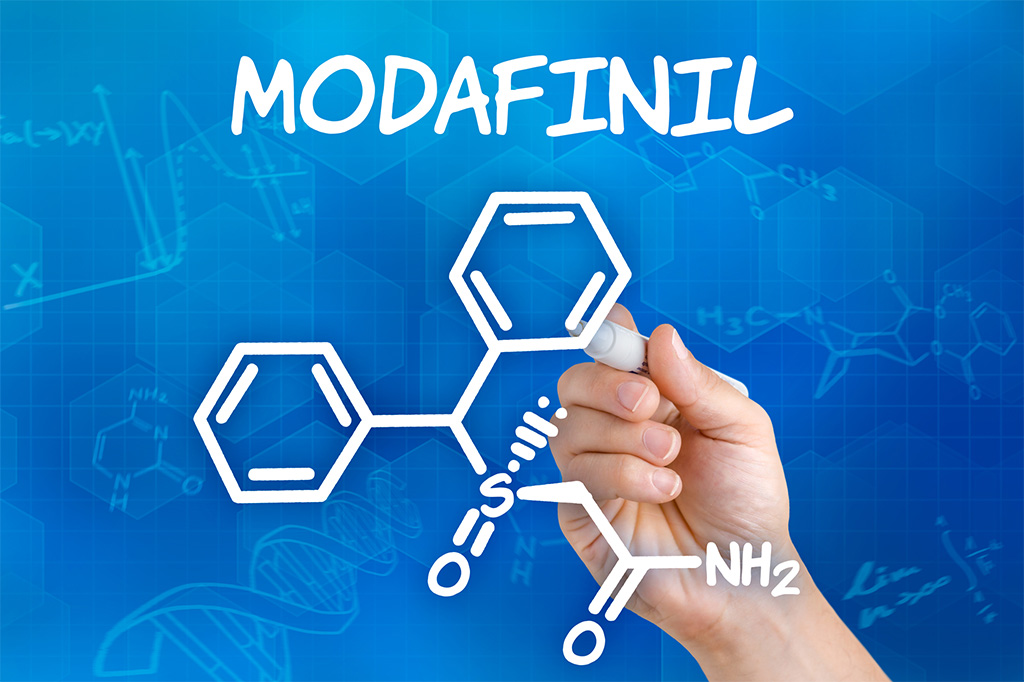Why Modafinil Isn’t an FDA-Approved ADHD Medication (Yet)
Modafinil is a wakefulness-promoting medicine that is FDA-approved for narcolepsy, obstructive sleep apnea, and shift work disorder. It has been studied for ADHD, and some short-term trials showed improvement in symptoms. It is not FDA-approved for ADHD because of safety concerns in children, limited long-term evidence, and inconsistent results compared with standard ADHD medicines (U.S. Food and Drug Administration, 2015; Biederman et al., 2005; Gomez & Noble, 2015).
What modafinil is actually approved to treat
In the United States, the FDA approves modafinil for narcolepsy, obstructive sleep apnea, and shift work disorder. It is not approved for ADHD in any age group. Effectiveness and safety in children are not established on the label, and serious rashes have been reported in pediatric use (U.S. Food and Drug Administration, 2015; Greenblatt & Adams, 2023).
Why the FDA has not approved modafinil for ADHD
1) Pediatric safety signals in trials
Across company-sponsored pediatric ADHD trials, rashes that led to stopping the drug occurred in about 0.8 percent of exposed children, including one possible SJS case. The label advises stopping at the first sign of rash because benign rashes can progress and predicting severity is not possible (U.S. Food and Drug Administration, 2015). An FDA advisory panel later recommended against pediatric approval. News coverage at the time highlighted SJS concerns discussed at the meeting (Hamilton, 2006).
2) Limited long-term data
Evidence is dominated by short trials of about 6 to 9 weeks. Long-term safety and sustained benefit, especially in children and teens, are not well characterized compared with stimulants and atomoxetine, which have decades of data (Biederman et al., 2005; Magnus et al., 2023).
3) Mixed effectiveness across studies
Pediatric trials showed statistically significant symptom reductions over a few weeks, but adult data are mixed and do not show clear benefit in all studies. The overall evidence base is smaller than for approved ADHD medicines (Biederman et al., 2005; Gomez & Noble, 2015; Greenblatt & Adams, 2023).
4) Availability of better-studied alternatives
Stimulants such as methylphenidate and amphetamine products, and non-stimulants such as atomoxetine, have stronger, longer-term evidence in ADHD. They are standard of care in guidelines and common in real-world prescribing, especially for children (Magnus et al., 2023; Schlander, 2007).
What the studies show, in plain language
- Short-term pediatric benefit: A 9-week randomized trial found modafinil improved ADHD rating scale scores at school and home compared with placebo. Common side effects included insomnia, headache, and decreased appetite (Biederman et al., 2005).
- Meta-analysis: Pooling three randomized pediatric trials showed significant improvement vs placebo, but the number of studies was small and follow-up was short (Gomez & Noble, 2015).
- Adult results: At least one randomized adult study did not find benefit, and adult evidence is inconsistent overall (Greenblatt & Adams, 2023).
Safety profile to understand
- Serious rashes: Rare but serious reactions, including SJS, toxic epidermal necrolysis, and drug rash with eosinophilia and systemic symptoms, have been reported. Risk appears highest within the first 6 weeks of use. Stop the drug and seek medical care if a rash appears (U.S. Food and Drug Administration, 2015; Greenblatt & Adams, 2023).
- Psychiatric and cardiovascular cautions: Anxiety, insomnia, agitation, and, rarely, psychosis or mania can occur. Use caution in people with certain heart conditions or a history of stimulant-related cardiotoxicity (U.S. Food and Drug Administration, 2015).
- Misuse and dependence: Modafinil is a Schedule IV controlled substance. Case reports describe dependence with very high daily intakes and withdrawal-like symptoms on stopping. These are rare but documented, including in people with ADHD (Krishnan & Chary, 2015; Alacam et al., 2018; U.S. Food and Drug Administration, 2015).
Drug interactions that matter
- Hormonal birth control: Modafinil induces cytochrome P450 3A4. It can lower estrogen and progestin exposure and reduce contraceptive effectiveness. Use a non-hormonal or additional method during treatment and for one month after stopping (Robertson et al., 2002; U.S. Food and Drug Administration, 2015).
- Selective serotonin reuptake inhibitors (SSRIs): Modafinil inhibits cytochrome P450 2C19. It can increase levels of drugs such as escitalopram in some people. Monitor for side effects or consider dose adjustments if needed (Pliszka, 2022; Greenblatt & Adams, 2023).
- Other interactions: It may reduce exposure to some antiretrovirals, immunosuppressants, benzodiazepines, and opioids metabolized by CYP3A4, and increase exposure to some CYP2C19 substrates. Review all medicines with a clinician or pharmacist (U.S. Food and Drug Administration, 2015; Greenblatt & Adams, 2023).
Off-label use today, and why clinicians are cautious
Some clinicians may consider off-label modafinil in adults who do not tolerate or do not respond to standard ADHD medicines. Given the pediatric safety signal, mixed adult efficacy, and interactions, off-label use should be individualized and monitored closely. This is especially true when patients take SSRIs, oral contraceptives, or medicines with cardiovascular effects (U.S. Food and Drug Administration, 2015; Greenblatt & Adams, 2023).
Better-studied ADHD options
- Stimulants: Methylphenidate and amphetamine products remain first-line for most patients due to strong evidence for symptom control and functioning, with long-term pediatric data (Magnus et al., 2023).
- Non-stimulants: Atomoxetine, guanfacine extended-release, and clonidine extended-release are options when stimulants are not suitable (Magnus et al., 2023).
- Behavioral supports: Parent training, classroom accommodations, sleep hygiene, and organizational strategies help medications work better (Magnus et al., 2023).
Practical guidance if you are asking about modafinil for ADHD
- Discuss why you are considering it and what has already been tried.
- Review all medicines, supplements, and contraceptive methods for interactions.
- Ask about monitoring plans for rash, mood, sleep, blood pressure, and heart rate during the first 6 weeks.
- Plan follow-up to judge benefit and safety within a few weeks if an off-label trial is attempted in adults (U.S. Food and Drug Administration, 2015; Greenblatt & Adams, 2023).
FAQs
Can modafinil be used for ADHD in children?
It is not approved for any pediatric indication. Pediatric ADHD trials raised concerns about serious rashes, and the FDA label advises against pediatric use. Clinicians use approved ADHD medicines instead because they have stronger safety and efficacy data in children (U.S. Food and Drug Administration, 2015; Magnus et al., 2023).
Does modafinil cause dependence or withdrawal?
Modafinil has lower abuse potential than many stimulants, but it is a controlled substance. Case reports describe dependence at very high doses and withdrawal-like symptoms when stopping. Use only under medical supervision (Krishnan & Chary, 2015; Alacam et al., 2018; U.S. Food and Drug Administration, 2015).
Will modafinil affect my birth control?
It can reduce the effectiveness of hormonal birth control. Use a non-hormonal method or a backup method while taking modafinil and for one month after stopping (Robertson et al., 2002; U.S. Food and Drug Administration, 2015).
Is there strong evidence that modafinil works for adult ADHD?
Evidence is mixed. Some studies show benefit while others do not. The overall evidence base is smaller than for approved ADHD medicines, which is one reason modafinil has not been approved for this use (Greenblatt & Adams, 2023; Gomez & Noble, 2015).
References
- U.S. Food and Drug Administration. (2015). PROVIGIL® (modafinil) tablets, for oral use, C-IV [Prescribing information]. U.S. Department of Health and Human Services. Retrieved from https://www.accessdata.fda.gov/drugsatfda_docs/label/2015/020717s037s038lbl.pdf
- Greenblatt, K., & Adams, N. (2023, February 6). Modafinil. In StatPearls [Internet]. Treasure Island (FL): StatPearls Publishing; 2025 Jan–. Available from https://www.ncbi.nlm.nih.gov/books/NBK531476/
- Biederman, J., Swanson, J. M., Wigal, S. B., Kratochvil, C. J., Boellner, S. W., Earl, C. Q., Jiang, J., & Greenhill, L. (2005). Efficacy and safety of modafinil film–coated tablets in children and adolescents with attention-deficit/hyperactivity disorder: Results of a randomized, double-blind, placebo-controlled, flexible-dose study. Pediatrics, 116(6), e777–e784. https://doi.org/10.1542/peds.2005-0617
- Alacam, H., Basay, O., Tumkaya, S., Mart, M., & Kar, G. (2018). Modafinil dependence: A case with attention-deficit/hyperactivity disorder. Psychiatry Investigation, 15(4), 424–427. https://doi.org/10.30773/pi.2016.10.25
- Gomez, Z., & Noble, P. (2015). Meta-analysis of the effect of modafinil in children and adolescents with attention deficit and hyperactive disorder. European Psychiatry, 30(S1), 1. https://doi.org/10.1016/S0924-9338(15)30458-2
- Hamilton, J. (2006, March 24). FDA committee rejects ADHD use for modafinil. NPR. https://www.npr.org/2006/03/24/5298885/fda-committee-rejects-adhd-use-for-modafinil
- Schlander, M. (2007). Impact of attention-deficit/hyperactivity disorder (ADHD) on prescription drug spending for children and adolescents: Increasing relevance of health economic evidence. Child and Adolescent Psychiatry and Mental Health, 1(1), 13. https://doi.org/10.1186/1753-2000-1-13
- Robertson, P. Jr., Hellriegel, E. T., Arora, S., & Nelson, M. (2002). Effect of modafinil on the pharmacokinetics of ethinyl estradiol and triazolam in healthy volunteers. Clinical Pharmacology & Therapeutics, 71(1), 46–56. https://doi.org/10.1067/mcp.2002.121217
- Pliszka, A. G. (2022). Modafinil: A review and its potential use in the treatment of long COVID fatigue and neurocognitive deficits. American Journal of Psychiatry Residents’ Journal, 17(4), 5–7. https://doi.org/10.1176/appi.ajp-rj.2022.170402
- Gerrard, P., & Malcolm, R. (2007). Mechanisms of modafinil: A review of current research. Neuropsychiatric Disease and Treatment, 3(3), 349–364. https://pubmed.ncbi.nlm.nih.gov/19300566/
- Krishnan, R., & Chary, K. V. (2015). A rare case of modafinil dependence. Journal of Pharmacology & Pharmacotherapeutics, 6(1), 49–50. https://doi.org/10.4103/0976-500X.149149
- Magnus, W., Anilkumar, A. C., & Shaban, K. (2023, August 8). Attention deficit hyperactivity disorder. In StatPearls [Internet]. Treasure Island (FL): StatPearls Publishing; 2025 Jan–. Available from https://www.ncbi.nlm.nih.gov/books/NBK441838/









can yoy take monaidil with adhd drugs?